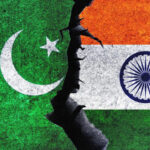Region has recorded low figures of the virus despite its large population
Not just India, but the SAARC region as a whole is seeing a slower increase in COVID-19 or novel coronavirus infections, particularly in terms of critical cases. If the trend persists, this maybe worth deeper study, say experts.
COVID-19 | Interactive map of confirmed coronavirus cases in India
While low testing rates are clearly one reason for the low figures that have been recorded, experts are pointing to the need to study the impact of pre-existing immunity, as well as the impact of the strict lockdowns and social distancing measures that have been adopted in India and the eight neighbouring countries of South Asia including Afghanistan, Bangladesh, Bhutan, Nepal, Pakistan, Sri Lanka, and the Maldives.
“All governments in South Asia have responded rapidly to the crisis, but their task is daunting. Governments have imposed social-distancing measures, introduced relief packages to secure access to food, and provided for delays in payments on taxes, rent, utilities and debt service,” said a “South Asia Economic Focus” study, published by the World Bank this week. The study predicted a sharp fall in the economic growth rates of all SAARC countries, even as it recorded much lower infection rates in the region compared to the worst affected countries including the U.S. and China.
According to the latest figures, the eight SAARC nations account 1.1%, approximately of the world total of 22,65,727 coronavirus cases. In terms of fatalities, the SAARC total is half a percentage point or (0.49%) or 768 of the total of 155,145 people who have died of the infection.
India has the largest number of cases in the region at 14,651 with Pakistan next at 7,481 while Bhutan has the lowest number with just five of cases in the subcontinent. The numbers are particularly low when one considers that South Asia accounts for a fifth (21%) of the world’s population, living in dense conditions on 3% of the world’s land mass.
“It appears that our neighbourhood has shown very low number of cases and fatalities per million population as well,” P.S. Raghavan, the Chairman of the National Security Advisory Board, told The Hindu.
“It is worth studying the causes for this common trend in South Asia. Is it efficient handling by the governments, low testing rates or are there other underlying reasons for this?” he asked.
Yet a study tweeted by the NITI Ayog CEO Amitabh Kant pointed to the fact that the number of positive cases arising from the tests are also much lower in India than these countries. While the U.S. showed 19.8% positive cases, France showed 41.8% and Italy showed 15.1% positive cases, according to the NITI Aayog study, India showed about 4.7%.
The Hindu tracked the number of positives amongst tests in Pakistan (9.54%), Bangladesh (10.06%) and Sri Lanka (5.12%), again recording figures much lower than those in Europe and the U.S., although experts point out that as the number of tests increase, the positive percentage might also increase.
The NITI Aayog CEO also pointed to the slower rate of growth in infections. While Italy, the U.S. and India all saw their first COVID-19 cases within ten days of each other, cases in Italy were “1300 times” India’s daily cases on Day 46, and on Day 65, while the U.S. daily cases were 25 times India’s cases.
“Despite increased testing, our percentage of positive cases is still low compared to others. India’s strong measures on travel restrictions, social distancing, Janata curfew & lockdown have paid dividends,” Mr. Kant said, attributing the low figures to the government’s measures.
As the World Bank study noted, most South Asian countries have adopted international travel bans, lockdown of manufacturing and personal activity, and prohibition of religious gatherings until now.
Next week, the Indian Council of Medical Research (ICMR) plans to begin a separate study on the efficacy of the “BCG” vaccine, which one study has linked to higher COVID-19 immunity across the world, although the WHO has not validated the findings.
Some experts have also pointed to the fact that South Asia accounts for 40% of the world’s cases of tuberculosis, which may impart some amount of immunity to its inhabitants as well.
A more comprehensive view will emerge if SAARC countries, which have at present joined forces towards countering the coronavirus crisis and contributed to a special SAARC-COVID-19 fund, also commission separate studies on the impact of the virus, specific to the region.
Coronavirus | South Asia remains an outlier in infections
Region has recorded low figures of the virus despite its large population
Not just India, but the SAARC region as a whole is seeing a slower increase in COVID-19 or novel coronavirus infections, particularly in terms of critical cases. If the trend persists, this maybe worth deeper study, say experts.
COVID-19 | Interactive map of confirmed coronavirus cases in India
While low testing rates are clearly one reason for the low figures that have been recorded, experts are pointing to the need to study the impact of pre-existing immunity, as well as the impact of the strict lockdowns and social distancing measures that have been adopted in India and the eight neighbouring countries of South Asia including Afghanistan, Bangladesh, Bhutan, Nepal, Pakistan, Sri Lanka, and the Maldives.
“All governments in South Asia have responded rapidly to the crisis, but their task is daunting. Governments have imposed social-distancing measures, introduced relief packages to secure access to food, and provided for delays in payments on taxes, rent, utilities and debt service,” said a “South Asia Economic Focus” study, published by the World Bank this week. The study predicted a sharp fall in the economic growth rates of all SAARC countries, even as it recorded much lower infection rates in the region compared to the worst affected countries including the U.S. and China.
According to the latest figures, the eight SAARC nations account 1.1%, approximately of the world total of 22,65,727 coronavirus cases. In terms of fatalities, the SAARC total is half a percentage point or (0.49%) or 768 of the total of 155,145 people who have died of the infection.
India has the largest number of cases in the region at 14,651 with Pakistan next at 7,481 while Bhutan has the lowest number with just five of cases in the subcontinent. The numbers are particularly low when one considers that South Asia accounts for a fifth (21%) of the world’s population, living in dense conditions on 3% of the world’s land mass.
“It appears that our neighbourhood has shown very low number of cases and fatalities per million population as well,” P.S. Raghavan, the Chairman of the National Security Advisory Board, told The Hindu.
“It is worth studying the causes for this common trend in South Asia. Is it efficient handling by the governments, low testing rates or are there other underlying reasons for this?” he asked.
Yet a study tweeted by the NITI Ayog CEO Amitabh Kant pointed to the fact that the number of positive cases arising from the tests are also much lower in India than these countries. While the U.S. showed 19.8% positive cases, France showed 41.8% and Italy showed 15.1% positive cases, according to the NITI Aayog study, India showed about 4.7%.
The Hindu tracked the number of positives amongst tests in Pakistan (9.54%), Bangladesh (10.06%) and Sri Lanka (5.12%), again recording figures much lower than those in Europe and the U.S., although experts point out that as the number of tests increase, the positive percentage might also increase.
The NITI Aayog CEO also pointed to the slower rate of growth in infections. While Italy, the U.S. and India all saw their first COVID-19 cases within ten days of each other, cases in Italy were “1300 times” India’s daily cases on Day 46, and on Day 65, while the U.S. daily cases were 25 times India’s cases.
“Despite increased testing, our percentage of positive cases is still low compared to others. India’s strong measures on travel restrictions, social distancing, Janata curfew & lockdown have paid dividends,” Mr. Kant said, attributing the low figures to the government’s measures.
As the World Bank study noted, most South Asian countries have adopted international travel bans, lockdown of manufacturing and personal activity, and prohibition of religious gatherings until now.
Next week, the Indian Council of Medical Research (ICMR) plans to begin a separate study on the efficacy of the “BCG” vaccine, which one study has linked to higher COVID-19 immunity across the world, although the WHO has not validated the findings.
Some experts have also pointed to the fact that South Asia accounts for 40% of the world’s cases of tuberculosis, which may impart some amount of immunity to its inhabitants as well.
A more comprehensive view will emerge if SAARC countries, which have at present joined forces towards countering the coronavirus crisis and contributed to a special SAARC-COVID-19 fund, also commission separate studies on the impact of the virus, specific to the region.






NO COMMENT